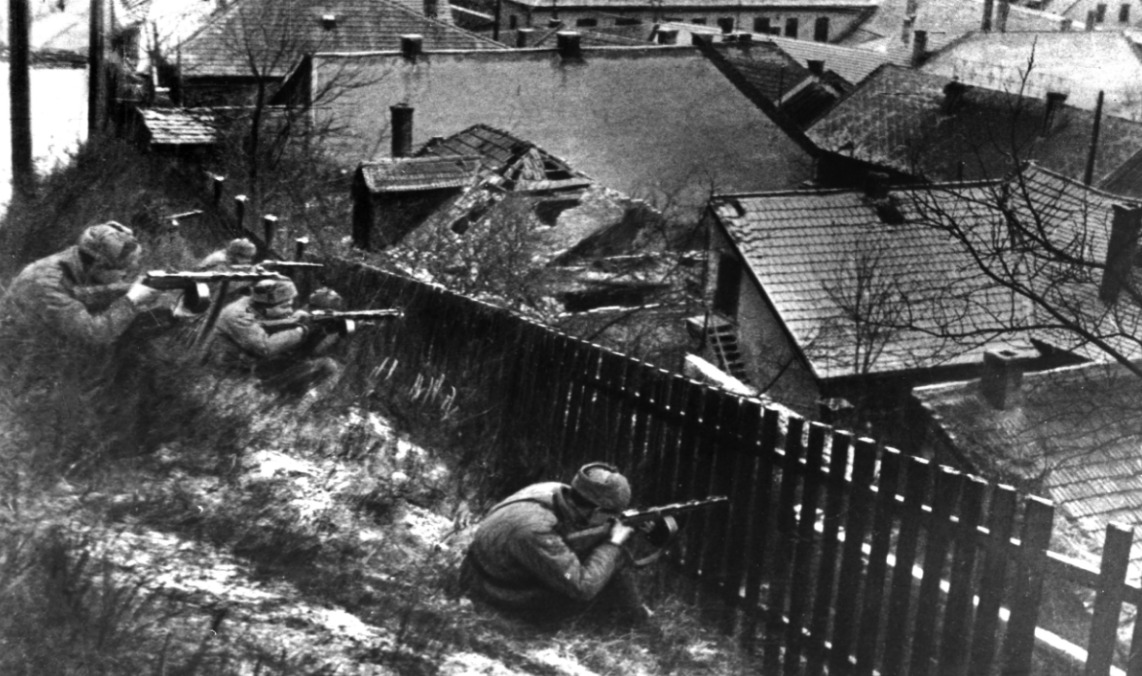Students and teachers of Kazan University participated in the liberation of Budapest

13 February 1945 was the day when the Hungarian capital was liberated from Nazi occupation by Soviet troops – in the operation that lasted over three months.
In 1944, the invading forces were expelled from the territory of the Soviet Union, but a decisive victory over Nazi Germany and its satellites could not be achieved without also liberating European countries, dismantling the system of concentration camps and Jewish ghettos, and prosecuting the war criminals after a full capitulation of the Nazi war machine.
In mid-1944, the Eastern Front comprised the majority of the Axis troops – 288 divisions, 23 brigades (totalling together about 4.3 million servicemen), 7,800 tanks, and 3,200 airplanes. The obliteration of Nazi forces in Eastern, Northern, Central and Southeastern Europe demanded an immense effort from the Red Army, keeping in mind the necessity to liberate such large capital cities as Warsaw, Belgrade, Budapest, Vienna, Prague, and Berlin.
The Budapest Operation was undertaken by the Second Ukrainian Front, commanded by Marshal Rodion Malinovsky, and the Third Ukrainian Front, commanded by Marshal Fyodor Tolbukhin, and started on 29 October 1944. It followed the completion of the Debrecen Operation on that same day. Among other things, Budapest contained one of the largest Jewish ghettos, with over 250,000 people facing mortal danger.
The duration of the Budapest offensive was 108 days, the breadth of the front was 420 km, the depth was between 250 and 400 km, and daily progress between 2.5 and 4 km.
In early 1945, the Hungarian capital housed an immense Nazi force from the remainders of Army Group South, including 13 tank divisions, 2 motorized divisions, and 1 brigade. The defending force amounted to 80 thousand individuals. The führer prohibited them from abandoning Budapest at whatever cost, since such a failure opened the road to Vienna and Central Europe. Street fighting mostly precluded the use of tanks, with many small assault squads supported by artillery.
In January – February 1945, the Soviet army had to defeat three massive tank counter-offensives. Marshal Tolbukhin used his successful experience from the Battle of Stalingrad, where deep echelon defense was created at depths of 25 to 50 km inside the front.
255 Soviet warriors were awarded the title of the Hero of the Soviet Union, and 362,050 received the Medal for the Liberation of Budapest.
Among KFU representatives who contributed to the victory in that battle were:
Boris Babintsev, driver; after the war – lab engineer;
Nurgayaz Garifyanov, commander of a radio platoon; after the war – educator and physics researcher; his name was given to one of the streets of Kazan;
Gennady Paushkin, chief of a radio station; after the war – writer and journalist;
German Priyezzhev, infrantryman; after the war – head of the zoological museum.

